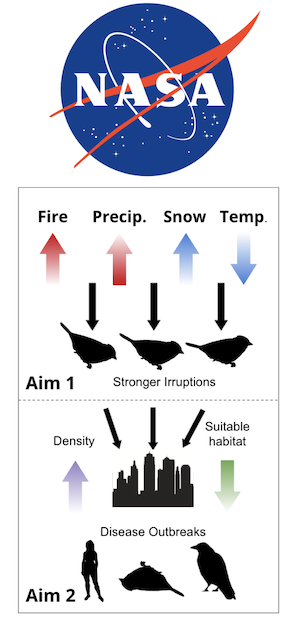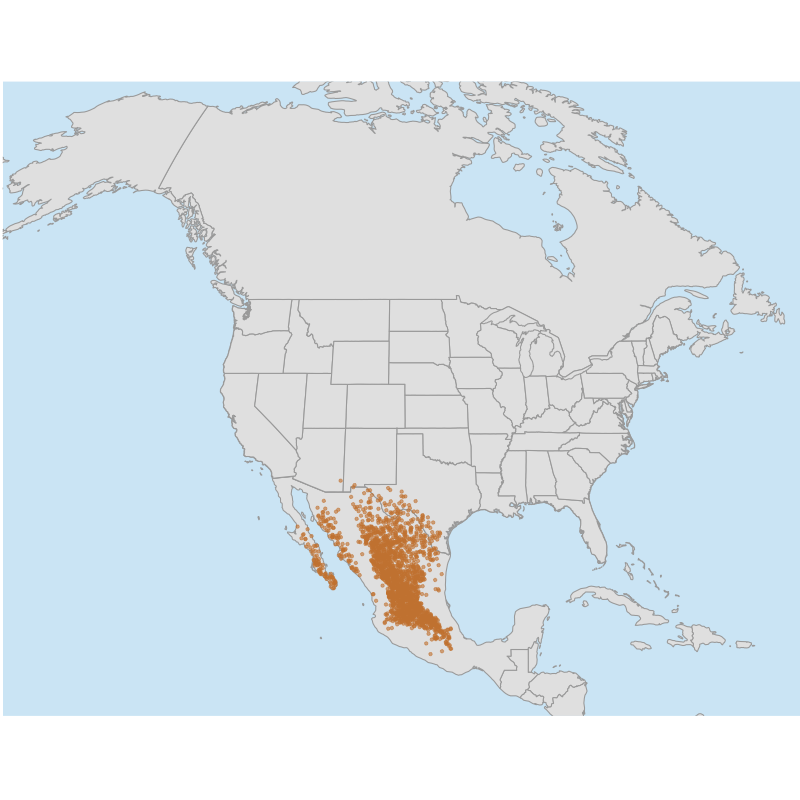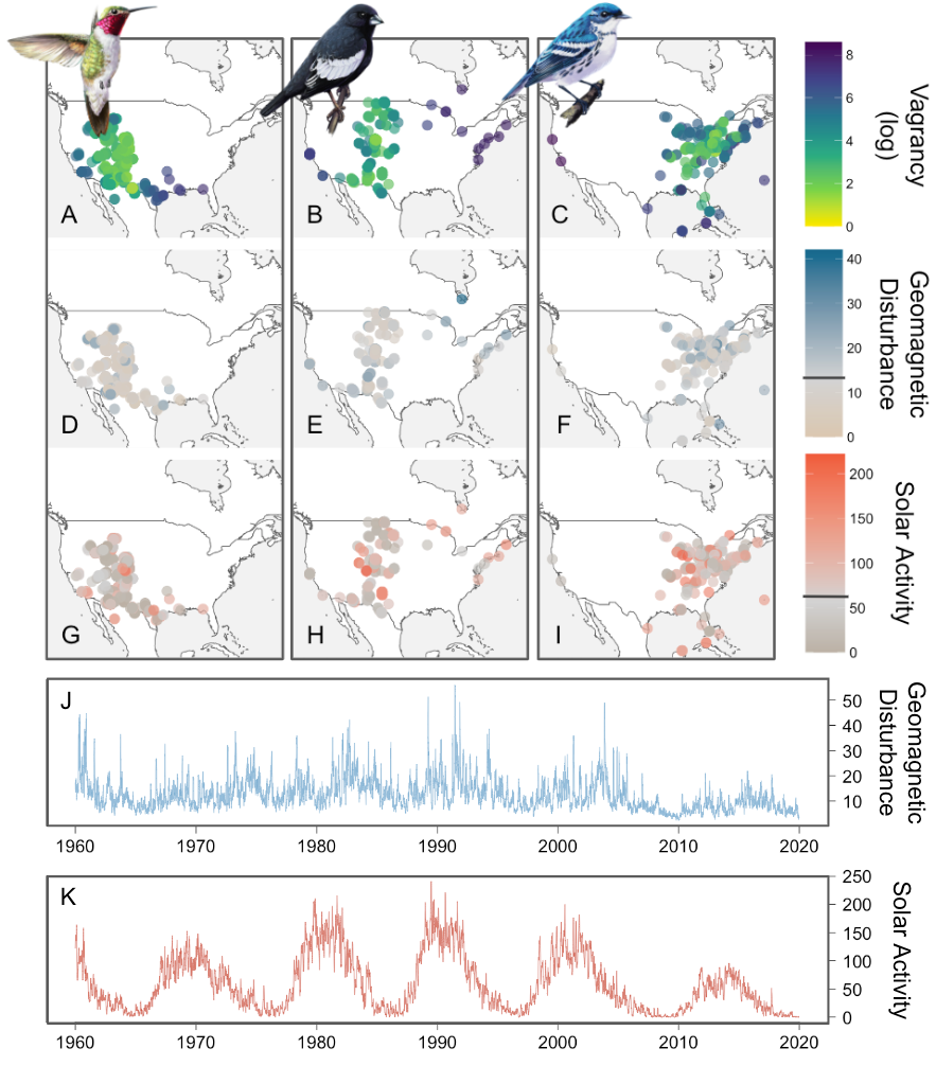Research
Migratory Birds and Disease
 Climate change and land-use change are both responsible for an increasing risk of disease in both wildlife and human populations. My research investigates the impact of both of these factors on the disease ecology of irruptive bird species like the Pine Siskin, a small songbird normally found at high latitudes and high elevations. Irregularly, this species exhibits irruptions, where large numbers of individuals migrate to low latitudes and elevations in response to poor environmental conditions. Often, outbreaks of disease among birds, domesticated animals and humans occur during these irruptions – particularly Salmonellosis – likely because irruptions concentrate large numbers of immunologically-stressed birds into small, urbanized habitats. This research, funded by a NASA FINESST fellowship, will investigate the environmental drivers of irruptions and the impact of urbanization on disease outbreaks. In the future, this research could help develop tools to predict outbreaks among birds, livestock and humans.
Climate change and land-use change are both responsible for an increasing risk of disease in both wildlife and human populations. My research investigates the impact of both of these factors on the disease ecology of irruptive bird species like the Pine Siskin, a small songbird normally found at high latitudes and high elevations. Irregularly, this species exhibits irruptions, where large numbers of individuals migrate to low latitudes and elevations in response to poor environmental conditions. Often, outbreaks of disease among birds, domesticated animals and humans occur during these irruptions – particularly Salmonellosis – likely because irruptions concentrate large numbers of immunologically-stressed birds into small, urbanized habitats. This research, funded by a NASA FINESST fellowship, will investigate the environmental drivers of irruptions and the impact of urbanization on disease outbreaks. In the future, this research could help develop tools to predict outbreaks among birds, livestock and humans.Understanding the Impact of Climate Change on Migratory Timing
Decades of research has shown that birds are shifting the timing of seasonal events like migration and breeding to keep up with warmer temperatures and earlier springs. Understanding how birds are adapting is critical to predicting how birds will fare in a rapidly changing world. One of my projects looks at how shifting weather patterns differentially impacts bird species across North America.
Modeling Migratory Movement
Researching questions that rely on understanding the movement of individual migratory birds is difficult because of the incredible diversity of migratory behavior across and within species. One of my projects (you can read the paper here) is focused on creating and improving individual-based models to simulate the movement of birds across time and space. These computational models can then be used to investigate applied questions - like predicting where ticks that attach to birds are likely to be dispersed. Guess what species is modeled here!

Understanding the Causes of Avian Vagrancy
Vagrant birds are individuals that are rare in either time or space. These birds often attract a lot of attention from the birdwatchers of the world. Mystery surrounds what causes these birds to end up so far from their normal ranges. We found that these events are associated with disruptions to the Earth’s magnetic field, likely through interfering with the ability of birds to navigate using magnetoreception. You can read more about this research here.

